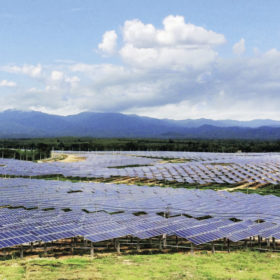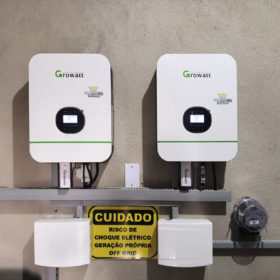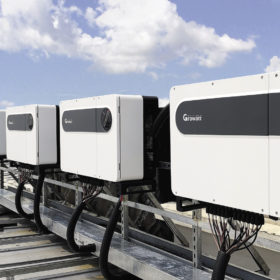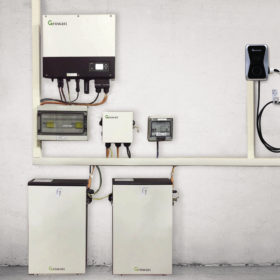Ten years of innovation and growth
At pv magazine we are proud to have worked closely with Growatt to produce this special edition in 2020, the tenth year since the founding of the Shenzhen-based manufacturer. Growatt and its founder, chairman and president David Ding have been pioneers in the global PV industry, being the first Chinese inverter manufacturer to focus on […]
Smart is the name of the game
Set out on a path to make a difference in the world’s energy future, young entrepreneur David Ding started Growatt a decade ago at the age of 30. Since then, his company has moved quickly to become one of the largest rooftop inverter manufacturers in the world. High in energy and swift to make bold moves, Ding is on a mission to shift the role of user-side solar generators – to become active participants of the new energy future.
Stringing up a success story
India-based Navalakha Translines chose Growatt’s string inverters for its 6 MW ground mounted plant in the Osmanabad district of Maharashtra in 2019, at a time when prices of string inverters were prohibitive for ground mounted solar PV plants. But the decision paid off, as the inverters with smart cooling are a great fit for the uneven terrain witnessing temperatures as high as 45 degrees Celsius.
Off-grid Brazil: extending beyond isolated communities
The Brazilian power grid reaches approximately 99% of the country’s population. To connect the remaining 1% has been challenging – often located in isolated communities of regions that are difficult to reach. With increasing global adoption of solar+storage, and significant price drops across the two technologies over the past decade, the solution is showing promise for the remote Brazilian market. Solar+storage is becoming a more competitive solution than its most popular alternative – diesel – to supply the needed power for off-grid communities. And now, even grid-connected residential properties are opting for independence.
The smart home in focus
Imagine an energy system where power generation is achieved through a diverse and decentralized network of energy units, such as your rooftop solar panels, that are monitored intelligently and the grid is able to manage supply and demand in real-time fashion. In this next energy era, the electric utilities do not generate their primarily revenues from moving electrons – but instead, by gathering and managing data – offering services rather than power. The vision of this futuristic energy system is not far from reality – and definitely provides a direction of travel for the energy industry.
Quality matters: Growatt’s five-step system
In 2018, Growatt’s new MAX series 80 kW inverter became the only commercial and industrial (C&I) inverter to receive the ‘All Quality Matters’ award from TÜV Rheinland. The MAX 50-100K is the company’s latest C&I flagship model to be launched by the Shenzhen-based manufacturer. With a maximum efficiency of up to 99%, the new solution offers 6 to 7 MPPTs. TÜV Rheinland’s prestigious award begs the question: How was Growatt able to reach this high level of quality, reliability and performance?
Monitoring: Driving reliability and O&M efficiency
Photovoltaic inverter monitoring has emerged as the primary tool for optimizing solar plant performance, and additionally, simplifying the operations and maintenance of these asset
Australia: Growth in capacity and consumer sophistication
With more than 2 GW of installed capacity in 2019, Australia’s rooftop PV market is booming and is expected to continue its record-breaking run this year. As distributed generation (DG) continues to grow in strength, Lily Zhou, COO of Sunterra, talks about the country’s evolving market landscape, and customer’s growing preference for top-notch products and services when choosing equipment.
Local knowledge, global growth
Through its key regional partner Omnisun Srl, Growatt has offered its products to the Italian market since 2012 – making it one of the first Chinese inverter brands operating in the country. pv magazine caught up with Omnisun’s chief technology officer, Giovanni Marino, to discuss Covid-19, reliable partners, new energy technologies, and his expectations for the Italian PV market.
Linking solar with energy storage and EV technologies
Solar is booming globally and as costs come down and the technology approaches grid-parity, historically based government incentive models and subsidies are changing –particularly for the distributed generation (DG) rooftop market. But new technologies and capabilities of other distributed energy resources (DERs), such as battery energy storage systems, electric vehicles (EVs), and other smart energy technologies, are stepping into position for a net-zero energy future – providing opportunity to advance beyond the power structures of the past.






